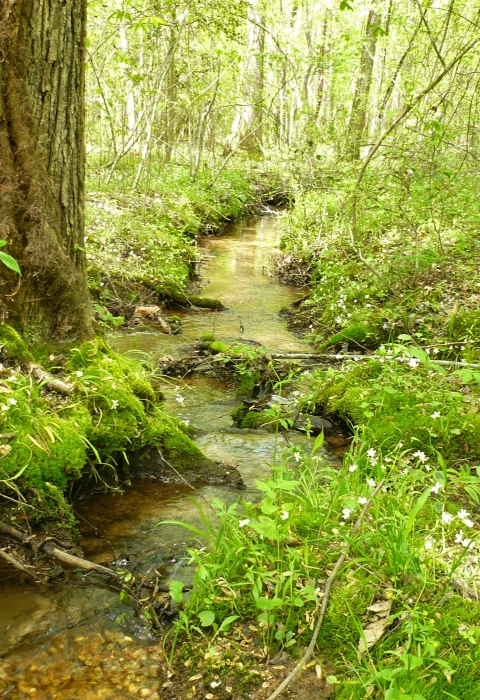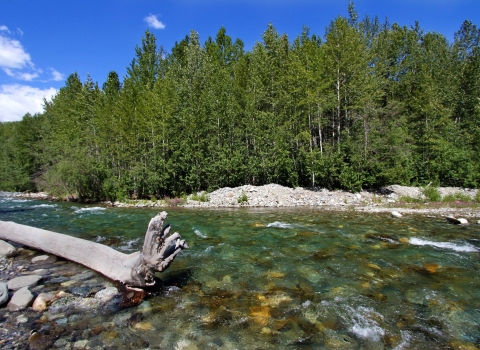The U.S. Fish and Wildlife Service is seeking public review and comment on a draft proposal and environmental assessment establishing the Southern Maryland Woodlands National Wildlife Refuge in Anne Arundel, Calvert, Charles, Prince George’s and St. Mary’s counties. The proposal would conserve up to 40,000 acres in fee-title acquisitions or easements from willing sellers across four watersheds, helping to conserve habitats that support threatened and endangered species, waterfowl and migratory birds of conservation concern.
Increasing access to public lands and waters is a central component of the Biden administration’s approach to conservation under the America the Beautiful initiative. The draft proposal draws upon a 2018 conservation plan that the Service developed in partnership with the Southern Maryland Conservation Alliance and was informed by three public listening sessions that took place across the proposed conservation area conservation area
A conservation area or wildlife management area is a type of national wildlife refuge that consists primarily or entirely of conservation easements on private lands. These conservation easements support private landowner efforts to protect important habitat for fish and wildlife. There are 13 conservation areas and nine wildlife management areas in the National Wildlife Refuge System.
Learn more about conservation area .
“The forests and wetlands of Southern Maryland provide special places for people and for wildlife. As these habitats come under pressure from climate change climate change
Climate change includes both global warming driven by human-induced emissions of greenhouse gases and the resulting large-scale shifts in weather patterns. Though there have been previous periods of climatic change, since the mid-20th century humans have had an unprecedented impact on Earth's climate system and caused change on a global scale.
Learn more about climate change and other threats, this proposal would help conserve these areas for future generations," said Scott Kahan, chief of the National Wildlife Refuge System for the Service’s northeast region. "We look forward to working with local communities and partners and receiving their feedback.”
As proposed, the new refuge would consist of four watershed-based units: the Lower Patuxent-Calvert Unit, Nanjemoy-Mattawoman Unit, Zekiah–Wicomico Unit and McIntosh Run-St. Mary’s Unit. The total area of the proposed refuge acquisition boundary is about 577,420 acres. Within this geography, the Service proposes to acquire up to 40,000 acres through a combination of fee-simple and conservation easement conservation easement
A conservation easement is a voluntary legal agreement between a landowner and a government agency or qualified conservation organization that restricts the type and amount of development that may take place on a property in the future. Conservation easements aim to protect habitat for birds, fish and other wildlife by limiting residential, industrial or commercial development. Contracts may prohibit alteration of the natural topography, conversion of native grassland to cropland, drainage of wetland and establishment of game farms. Easement land remains in private ownership.
Learn more about conservation easement purchases from willing sellers, to be managed as part of the National Wildlife Refuge System. The Service would continue to facilitate partner-led efforts to conserve important habitats across the remaining conservation area.
Habitat loss is the greatest threat to biodiversity in the United States. More than half of Maryland’s forests and wetlands have been lost in the conversion of important natural areas to other land uses, with more than 1 million acres having been developed since 1973. Such habitat loss represents the primary threat to Maryland’s fish and wildlife and the livelihoods and local economies that depend upon them.
If protected, these watersheds will continue to provide resilience to climate change, conserve waterfowl and other migratory bird habitat, aid in the recovery of listed threatened and endangered species and provide needed outdoor recreational opportunities for the 10 million people who live and work in the Washington-Baltimore metropolitan region. The areas proposed for inclusion in this new national wildlife refuge national wildlife refuge
A national wildlife refuge is typically a contiguous area of land and water managed by the U.S. Fish and Wildlife Service for the conservation and, where appropriate, restoration of fish, wildlife and plant resources and their habitats for the benefit of present and future generations of Americans.
Learn more about national wildlife refuge support a wide range of species including waterfowl, shorebirds, forest-interior and grassland-dependent birds, and threatened and endangered species such as the dwarf wedgemussel, Atlantic and shortnose sturgeon, Puritan and Northeastern tiger beetles and the northern long-eared bat.
Conservation easements are voluntary agreements that allow landowners to maintain working and private lands as they are with no further subdivision or development. These less-than-fee-title interests would provide important opportunities for conservation while maintaining private ownership rights and responsibilities.
The public may now review possible impacts and alternatives online at: https://www.fws.gov/project/evaluating-new-refuge-lands-southern-maryland, including the proposal, draft Land Protection Plan and Environmental Assessment.
All interested parties have the opportunity to participate and provide comments during the open 45-day public comment period. Please submit comments to: FW5southernmarylandplan@fws.gov. All comments must be received by April 22, 2024.
The National Wildlife Refuge System is an unparalleled network of 570 national wildlife refuges and 38 wetland management districts. There is a national wildlife refuge within an hour’s drive of most major metropolitan areas. More than 67 million Americans visit refuges every year. Refuges provide vital habitat for thousands of species and access to world-class recreation, from fishing, hunting and boating to nature watching, photography and environmental education. This recreation on national wildlife refuges supports regional economies to the tune of $3.2 billion dollars per year and support more than 41,000 jobs.
The U.S. Fish and Wildlife Service works with others to conserve, protect and enhance fish, wildlife, plants and their habitats for the continuing benefit of the American people. For more information, visit www.fws.gov and connect with us on social media: Facebook, Instagram, X (formerly known as Twitter), LinkedIn, Flickr, and YouTube.
-FWS-

